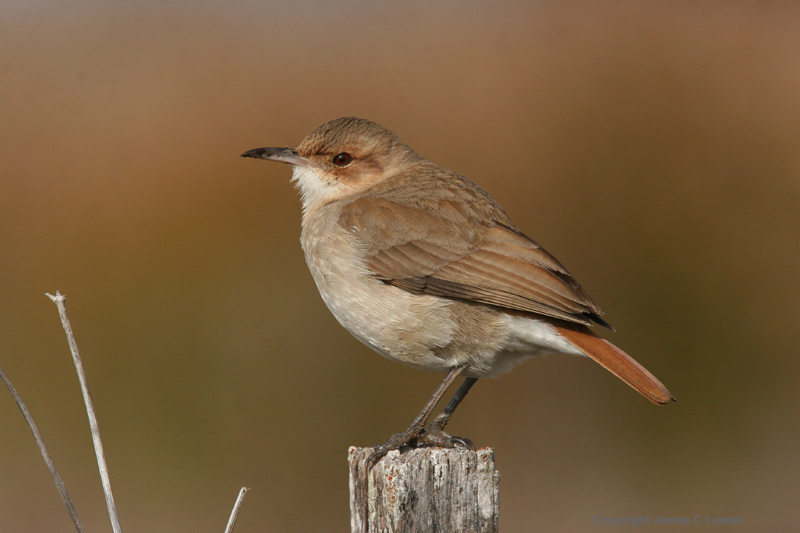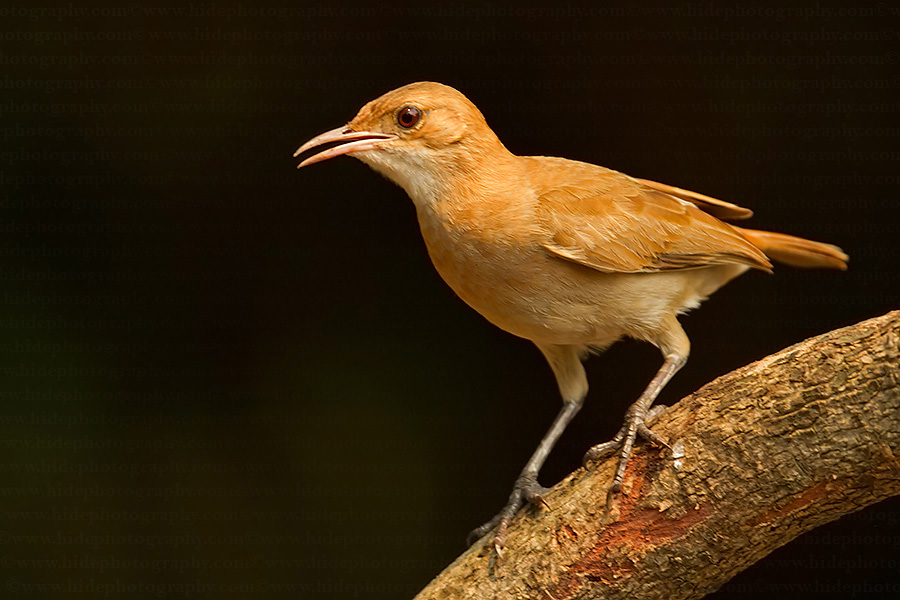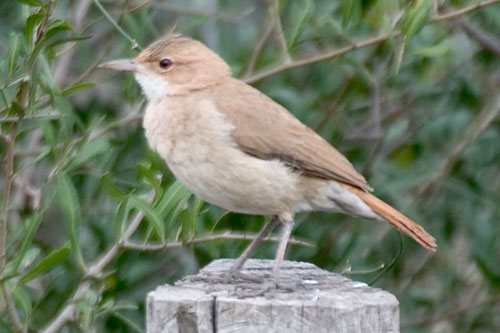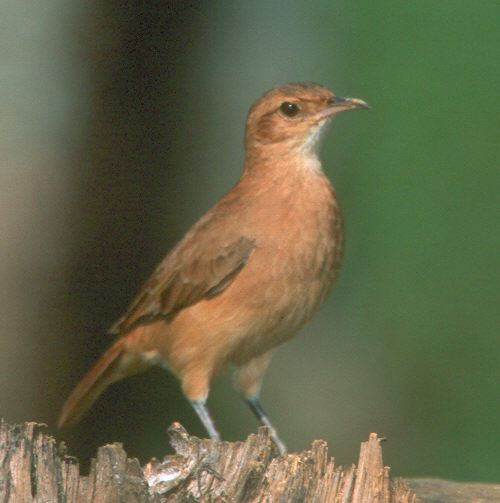
Furnarius rufus
SUBFAMILY
Furnariinae
TAXONOMY
Furnarius rufus J.F. Gmelin, 1788.
OTHER COMMON NAMES
English: Rufous ovenbird; French: Fournier roux; German:
Rosttцpfer; Spanish: Hornero Comъn.
PHYSICAL CHARACTERISTICS
Body length is 7–8 in (18–20 cm). Bill is rather short, almost
straight, and pointed. The tail is of medium length. The sexes
are similar. The overall coloration is brown on the back, with a
tan belly, white throat, somewhat rufous tail, and a tan stripe
over the eye.
DISTRIBUTION
A widespread species, occurring in Bolivia, much of southern
Brazil, Paraguay, Uruguay, and northern and central Argentina.
HABITAT
Inhabits a wide variety of arid and other open habitats. Often
occurs in the vicinity of surface water, such as streams,
rivers, ponds, or lakes. Commonly occurs in the vicinity of
human habitation and along roads. Mostly occurs as high as
about 8,200 ft (2,500 m), but can be as high as 12,150 ft
(3,500 m).
BEHAVIOR
Non-migratory. Usually occurs singly or in pairs. Defends a
breeding territory. A largely terrestrial bird that boldly runs
and hops over the ground, and also perches in exposed shrubs.
The song is a loud, fast, raucous series of notes, often performed
as a duet by a mated pair of birds.
FEEDING ECOLOGY AND DIET
Forages for insects and other small invertebrates on the
ground, among leaf litter, and by probing into soft earth with
its bill.
REPRODUCTIVE BIOLOGY
Constructs a large nesting structure of thousands of billfuls of
moist mud, used to make a spherical, oven-like structure
perched on a natural stump, fencepost, or telephone pole. The
internal nest cavity is accessed through a side-hole entrance.
The nesting structure is used once and then abandoned, although
disused nests may persist for several years and are often
used by other species. If posts are of limited supply, a new nest
may be constructed on top of an old one. Both the male and
female incubate the eggs and rear the nestlings.
CONSERVATION STATUS
Not threatened. A widespread and abundant species within its
HABITAT
.
SIGNIFICANCE TO HUMANS
National bird of Argentina, largely in popular recognition of its
bold and jaunty demeanor, and so it is of cultural significance.
Photo Gallery of - Rufous hornero




 Animalia Life
Animalia Life